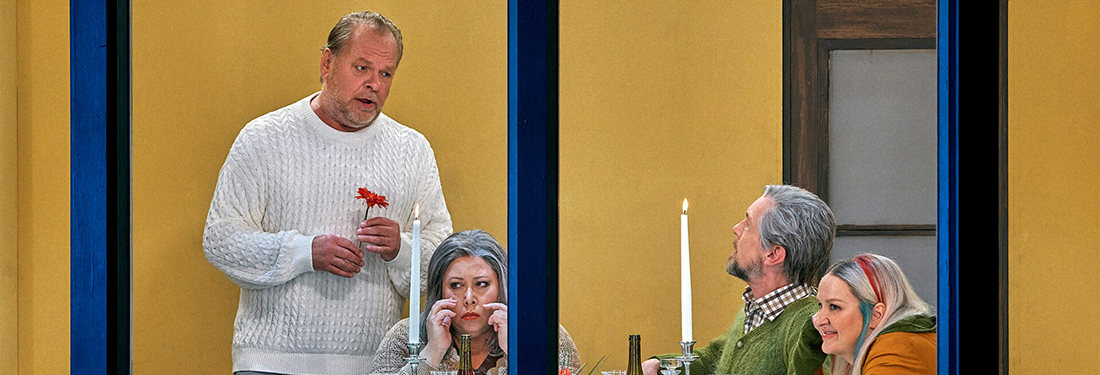
“Voglio essere giudicato per la musica e nient’altro che per la musica.”
“I want to be judged for my music and nothing but my music.” This phrase, which Mascagni himself wrote to his publisher Sonzogno, is the key to understanding the very essence and existence of L’amico Fritz (1891).
Cavalleria rusticana, Mascagni’s first performed opera, had premiered the previous year to astonishing success, and had instantly catapulted him to the top sphere of the musical world. Virtually overnight he had become a true international celebrity. Women swooned over his youth and good looks. Hordes of young men rushed to the barber to have the so-called “capelli alla Mascagni”, a sort of pompadour.
A good part of the intelligentsia was nonetheless trying to belittle the composer’s merits, ascribing most of Cavalleria’s triumph to its literary source, Giovanni Verga’s seminal and popular homonymous short novel, and later theatrical play. Consequently Mascagni, for his follow-up to Cavalleria rusticana, purposely set out to prove his talent by looking for a source of modest literary value.
Sonzogno suggested L’Ami Fritz, a sentimental novel by Emile Erckmann and Alexandre Chatrian, two French authors who specialized in stories taking place in their native Lorraine and nearby Alsace, and who found a vast readership among the French middle classes. It took five people, including the composer himself, to fashion a libretto Verdi did not hesitate to define “scemo”, a rather strong word meaning dumb, stupid. But that’s exactly what Mascagni was looking for: a silly plot unable to overshadow his music.
The story takes place in the Alsatian countryside in the mid 19th century. The protagonist is a wealthy landowner, Fritz Kobus, who is presented as a confirmed bachelor and misogynist at the beginning of the opera. During the course of three acts, thanks in part to the machinations of a matchmaker rabbi, he falls in love with Suzel, the teenaged daughter of his country estate manager; obviously, the girl secretly already loves him, and a happy end is assured.
The homey atmosphere, the bucolic nature of the story and the insubstantial plot contribute to temper Cavalleria’s energy and outburst, without repudiating the composer’s personality. Mascagni may have subdued Cavalleria’s extreme conflicts, but his ardent spirit is still simmering below the surface, and flashes of it erupt especially in the third act.
L’amico Fritz’s music is anything but conservative. It is on the contrary more audacious and daring than Cavalleria. The Preludietto to the first act, peppered with irksome parallel thirds and sixths, is already indicative of the diffused tonal ambiguity, and bold rhythmical and metrical fluctuation that permeates the whole score. Another example: Suzel’s ballade “Bel cavalier” is a mere two minutes of music where seven changes of keys are found in 57 measures, and the result is an undeniably unsettling feeling.
Immediately after the Cherry Duet, the music illustrating the arrival of the rabbi and Fritz’s friends in a carriage is an unmistakable and amusing parody of Alfio’s entrance in Cavalleria.
The opera received considerable popular and critical praise. The usually stern critic Hanslick found it a work of genius. Franchetti considered it more original than Cavalleria; Catalani was astonished at its musical unconventionality (always relative to the Italian opera of the time, obviously) and called some its tricks “diabolical”. Mahler saw it a progressive work and regularly directed it.
Audiences adored it. In Italy L’amico Fritz remained part of the standard repertoire of every opera house, at least until War World II. There was not a single lyric or di grazia tenor who did not consider it one of his war horses: Fernando De Lucia (who created it, opposite Emma Calvè as Suzel), Tito Schipa, Agostino Lazzari, Beniamino Gigli, Ferruccio Tagliavini, Cesare Valletti, all cherished the title role.
In the post-war period its performances dwindled. Tastes were changing, and after his death in 1945 at the age of 82, he, along with all his contemporaries, came to be regarded as relics of the past. There were political reasons as well. In 1932 he had become a member of the Fascist Party. Although there is evidence proving that he did it only out of convenience, he nevertheless allowed himself to be exploited by the Fascist propaganda as one of the most prominent symbols of “italianity.”
His last opera, Nerone, was widely perceived as a tribute to Fascist imperialism: the première was supposed to take place inside the Coliseum, but at the last moment this didn’t work and it was staged at La Scala. Even L’amico Fritz suffered a sort of censorship during Mussolini’s regime: after the racial laws were enforced, David the rabbi became simply “a doctor.” (Tagliavini in the 1941 recording conducted by Mascagni addresses David as “o buon dottore” instead of “o buon rabbino.”)
Mascagni’s operas, with the obvious exception of Cavalleria rusticana, were undeniably set aside in the new democratic climate. Even so, L’amico Fritz has never disappeared from the Italian opera houses. Smaller companies have especially been keen on staging it, because it is an inexpensive opera to produce. No costly sets are required, and it is easy to cast with young artists. In the rest of the world, on the other hand, it almost went the way of the Dodo.
Recording companies took very little interest in it. In addition to the 1941 Cetra release starring Tagliavini, his then wife Pia Tassinari and conducted by Mascagni himself, the only studio recording is the 1968 EMI edition with Luciano Pavarotti and Mirella Freni, with Gavazzeni on the podium. Other notable live recordings published on LP or CD include a 1951 performance from Naples, another “family affair” with a senior but still excellent Gigli (joined unfortunately by his daughter, the acidulous Rina); a 1953 Cetra live recording with Valletti and Rosanna Carteri and a 1963 performance from La Scala with Gianni Raimondi and Freni. In 2002 a DVD was released of a performance from Mascagni’s birthplace, Livorno, with Josè Bros and Dimitra Theodossiu. Of course there could be other live recordings of which I am not aware.
Excerpts of the opera, the Cherry Duet above all, have been regularly performed and recorded. The standards-bearer is still the one with Schipa and Favero but there are also a few oddballs, such as Cecilia Bartoli with Pavarotti, or Magda Olivero with Claudio Villa, the “reuccio” (or little king, by virtue of his diminutive height) of Italian melodic pop of the ‘50s.
Now Deutsche Grammophone is trying to fill the gap in L’amico Fritz’s scarce discography with this brand new recording, taped live in 2008 at the Deutsche Oper Berlin, starring Roberto Alagna and Angela Gheorghiu. The acclaimed duo has over the past decade embraced the cause for this work. Considering their highly publicized conjugal woes and impending divorce, it is ironic that their presumably last joint project involves an opera that is nothing but a crescendo towards the two protagonists’ marriage. As I hinted before, another famous operatic couple who had sung this opera very frequently, Tagliavini and Tassinari, also ended up in divorce.
I have some reservations about Alagna. The role of Fritz is not exceptionally demanding; its main difficulty consists in its lying on the passaggio, particularly in the third act, where the orchestra becomes louder. Here the French tenor demonstrates that he is still uncertain as to how to deal with those thorny notes between E and G above middle C. The F-sharp, perhaps the trickiest note in any tenor’s voice, is within the same aria (“O amore, o bella luce del cor”) resolved in several different ways: sometimes open and spread, sometimes covered, and sometimes (on the exposed phrase “possente ognor”) the tenor starts it covered and then opens it, to crude effect.
Although, as written, Fritz’s highest note is a B flat, Alagna joins Gheorghiu in an unwritten – for the tenor – high C in the third act duet (in hindsight, perhaps an attempt to upstage her, and overshadow the only chance she has in this opera to show off that money note?). Truth be told, that high C is a very good one indeed.
Mr. Alagna’s tone is grainy and lacks the sweetness that so much of his music requires. He doesn’t float his pianissimos with the same grace and ease of most of the tenors I have mentioned. Most of all, he is allergic to portamentos, which are essential in this repertoire, if used discreetly and tastefully. The Cherry Duet is in part marred by the relative shortage of his dynamic range, and especially by the falsetto (as opposed to a true pp mezza voce) he employs in the last few measures, on the upward linear interval G -G #- A. What’s more, in that very same spot, while Gheorghiu correctly sings “ah”, he utters a strange and funny vowel that sounds something like “ooh-ooh”, spoiling the magical effect.
As mentioned before, Suzel’s music touches the high C only once; on the contrary, her range is low for a soprano (for example, she has eleven low Ds to sing in the phrase “Mi commuove la musica”). Gheorghiu has a more Italianate voice than her partner; with her silky vibrato, she sings in a sort of old fashioned manner, which is part of her appeal. She tries very hard to become a simple country girl. Perhaps she tries too hard, because I sense a hint of artificiality in her interpretation: the grand diva who acts Suzel. In contrast, Freni, with her straightforwardness and naturalness is the naïve, unsophisticated girl.
Vocally Ms. Gheorghiu is sterling. The role presents no challenge for her. The high notes are bright, gleaming and penetrating, and her low register is firm and elegant because she does not try to enlarge it artificially. Furthermore, she respects all the dynamics required by the composer.
George Petean with his solid baritone makes the most of the impossibly irritating role of the rabbi. On the contrary, Laura Polverelli is disappointing as Beppe, a role en travestì. I had last heard her about a decade ago in bigger roles like Cenerentola, Rosina and Zerlina, and had appreciated her robust yet fluid mezzo-soprano. Here she sounds unsteady, unfocused and undistinguished.
The real surprise and biggest contribution to the success of this recording comes from conductor Alberto Veronesi. He avoids coating the narration with honey and molasses, undoubtedly the biggest risk in an opera of this kind, without doing away with the slightly melancholic dimension that constitutes the essence of this opera’s characters. The secret is to impart rhythmic freedom without losing the tight conciseness of the narrative. His task is made easier by the truly exquisite quality of The Orchestra of Deutsche Oper Berlin.
Veronesi is the artistic director of the Festival Pucciniano at Torre del Lago, where he has performed the composer’s complete canon. He demonstrates an evident affinity for this musical period. I look forward to his announced recordings of Giordano’s Fedora (with Gheorghiu and Placido Domingo substitiuting for Alagna), Leoncavallo’s La Bohème and especially Alfano’s Resurrezione.
As mentioned before, this is a live recording, capturing two concert performances that took place in September 2008 in Berlin; the quality of the sound is excellent, as if it had been recorded in a studio.














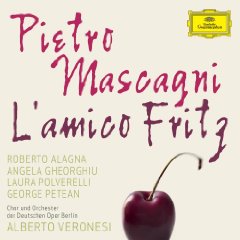
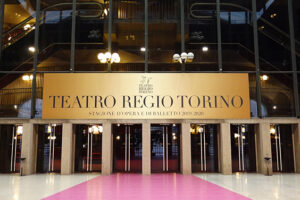
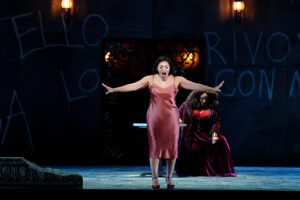

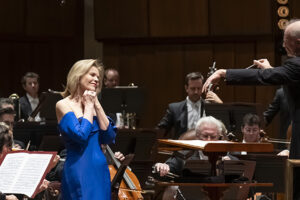






Comments